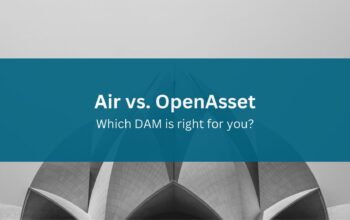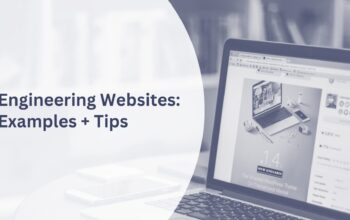The hospitality industry markets itself by giving customers a glimpse of the experience in store for them. This is why visual media is so essential to the industry. While customers want to know about the facilities and features of a hotel property, nothing will inspire the imagination of customers like a great visual experience before they purchase.
Because visuals and content are so crucial for hospitality, a brand can soon find it has more digital assets than it can practically manage. Interior and exterior property images, virtual tour videos, event photography, marketing stock, catering photography, etc. – it soon adds up.
With the creation of such large volumes of content, unless digital assets are managed meticulously, they can be hard to use, hard to locate, or even worse, accidentally deleted. These risks have time and money implications for your business.
Beyond the risks associated with managing large volumes of files, the control and distribution of image and marketing content are extremely important. Without the right means of control in place, employees can access expired content; uncontrolled digital assets can then find their way into marketing literature, presentations, and proposals.
It’s usually at this point that a brand starts looking for a tool to help them manage a growing marketing asset library. Digital Asset Management is a marketing technology that helps businesses manage those assets.
Digital Asset Management (DAM) for Hospitality
Digital Asset Management (DAM) is a way of managing your digital marketing assets. But DAM is more than just a library. A great DAM solution will integrate with the core applications in your tech stack, as well as social media, Content Management Systems, and other marketing essentials.
A DAM system differs from a photo hosting service or vanilla cloud storage; a DAM is built to assist with day to day marketing activities, brand control, and offer easy access for everyone who needs access.
DAM enables you to organize digital assets to be effortlessly searchable and accessible. DAM also puts you in control of the lifecycle of your digital assets. Once created, assets need to be managed and distributed and, after use, either preserved or archived; DAM makes this simple.
Some of the benefits of a DAM include:
- Marketing content is easy to find and available immediately, meaning significant time savings for teams across your business.
- Help you maintain brand integrity and ensures branding is delivered consistently.
- A DAM is scalable; as the number of assets increases, the workload to manage them does not.
- Editing, sharing, and repurposing assets are straightforward.
You can find out more in our blog ‘The Pros and Cons of Digital Asset Management.’
What file types can I store in a DAM?
Almost any file that company users might need access to can be made available on your DAM. For example:
- Photos
- Videos
- Design files
- Word documents
- PDFs
- Company brand items
- Presentations
- Marketing content and collateral
Content in the hospitality industry needs to be controlled, kept up-to-date, and consistent with brand guidelines. Digital Asset Management allows you to control and store your digital assets in one place that’s accessible by users across your organization. Ensuring consistency for each user as the most current assets will always be what they are accessing.
Control
Digital Asset Management allows hospitality companies to control and distribute digital content from a central point. Local content no longer sits in silos; teams now have immediate access to the most up-to-date files. DAM also improves workflows and enables large teams to work together seamlessly, regardless of location.
DAM gives assurance that users only have access to approved content. When that content is out of date, you can instantly remove its availability. You no longer need to ask colleagues to delete old files from network drives. You are now in full control of your company brand.
As hospitality brands tend to operate across many locations, it becomes important to capture content locally generated, as well as push content from a central point to local operations. DAM gives you an overview of all the content your company is creating.
As a hospitality brand, you will also be working with third-party partners, such as online booking agents, marketing agency partners, and tour operators. Giving third-party partners access to your freshest content via a DAM means that you can be confident that you’ll never have to worry about the use of out of date brand assets on a partner site.
Getting value from your content
Content and imagery is a vital part of marketing in the hospitality industry. Customers are taking more time to research destinations and the options for their trips, using a mixture of brand sites, online travel agents, price comparison sites, review sites, and travel blogs. This means that hospitality brands need to ensure they have the best and most recent content available for all the locations from which they operate.
Content only has value if it is being seen or used. Integrating a DAM with other applications, such as a CMS, CRM, ERP, CRS, RO, and social media channels, means you can collate and control the content, and quickly deploy it where it’s needed.
Hospitality brands not only need to manage large volumes of digital assets, but also a large number of marketing channels to work with. Hospitality is a competitive market with an ever-growing number of marketing opportunities. Every marketing channel has different image requirements; having the right system in place to make existing images easily searchable and adaptable is key to being able to engage with clients across multiple channels both online and offline.
Creating a great user experience
A large organization with multiple divisions and sub-brands needs to ensure that everyone has access to the most up to date assets in real-time. On top of this, the correct level of permissions needs to be in place for users and digital assets.
As the team with the most control over brand, the central marketing team is usually the owner of an organization’s digital assets and content. Therefore marketing is the natural owner of a DAM system. Most company ‘superusers’ will be in the marketing team, so alongside your DAM vendor’s Customer Success team, marketing should be prepared to provide support for other company users.
Other teams that have access to a DAM system could include agency partners, third party professional photographers, graphic designers, sales, management, and local/regional marketing teams managing promotional needs for their domestic properties.
When working within a large international organization, you will need to think about user experience across borders, so it’s important to have a robust implementation plan and set up some standards for things such as keywords. Keywords (descriptive words and phrases) to digital assets enables users to refine searches and efficiently catalog content for later retrieval. Keywords are an important tool for any DAM; that’s what makes it easier to find and manage your assets.
Setting up keywords might be the responsibility of the marketing team or the DAM admin, but it can be helpful to get input on keyword lists and structures from other teams using the DAM. If the keyword list and structure are agreed and transparent between the teams, it should be simple for anyone to pick up and use.
Keywords should be relevant to your business and simple enough that anyone should be able to find the content they need, regardless of whether they’ve used the DAM before or not. To be even more user-friendly, add synonyms to your structure.
Training
As firms expand and new team members join, it is vital for everyone is trained in using the DAM system. If team members don’t receive training, they may rely on others to locate images or files, be unable to create collateral themselves.
If you are considering a DAM, make sure your service provider has excellent resources to support training, or a customer success team to help you with training and set up.
Although you might not have thought about Digital Asset Management before, it’s common to be aware of the problems around managing large volumes of digital content. But you have a DAM solution in place, and every company marketing asset is available at your fingertips, you’ll wonder how you ever managed your digital assets without it.



